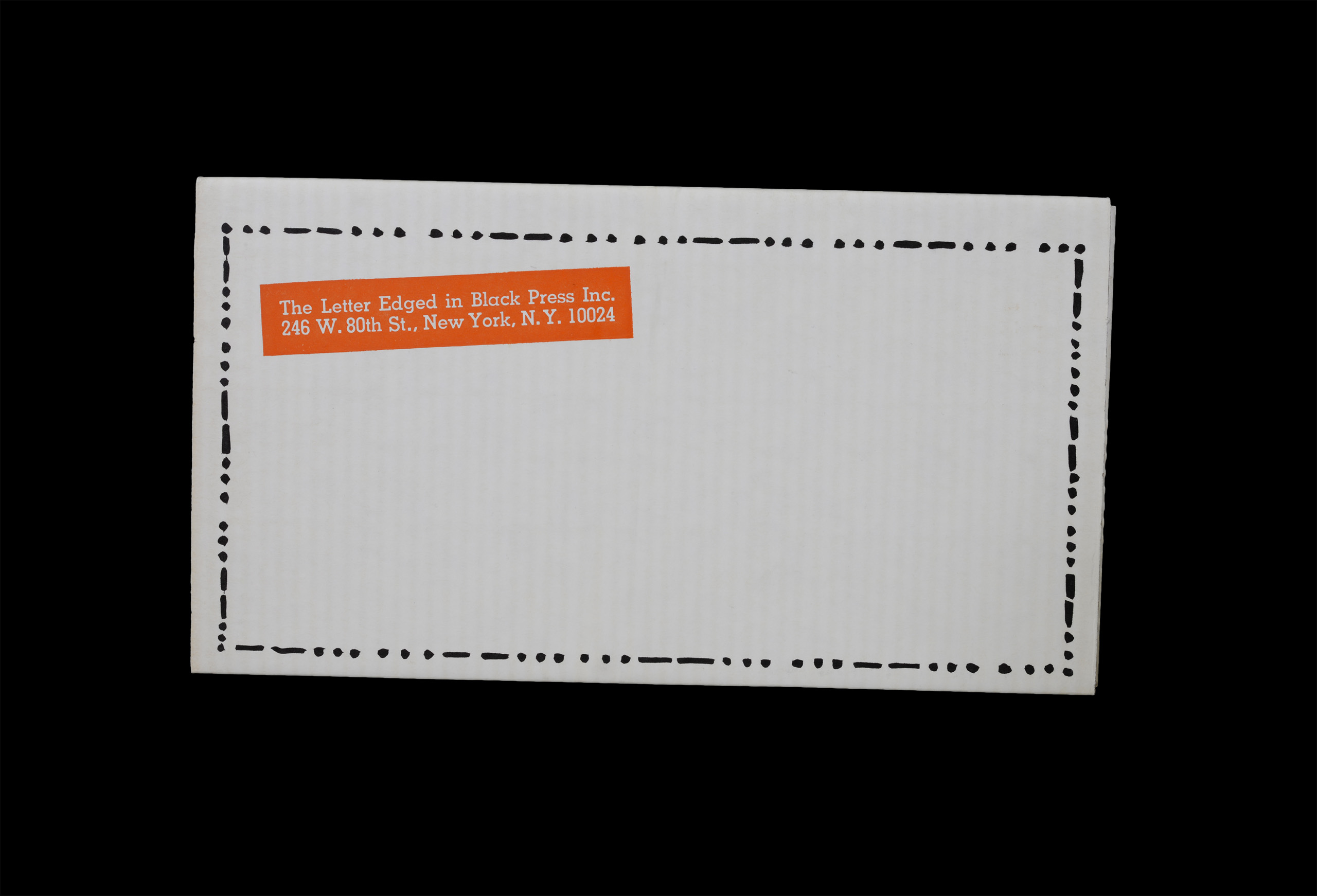
-
In the late 1960s, art was moving out of the galleries. Searching for new sites, forms, and formats, artists and curators turned to a new venue: the periodical. While some would stick to the printed page, others would push the magazine format to its limit. S.M.S., short for “Shit Must Stop,” endeavored to do just that.
Founded in New York City by artist, collector and dealer William Copley, S.M.S. was an art collection in a box, filled with small-scale, often whimsical, artworks available by subscription. Delivering art through the post offered Copley, and his collaborator Dmitri Petrov, a way to circumvent the art market and make contemporary art accessible to nearly anyone. Inspired by Copley’s mentor and friend Marcel Duchamp’s Boîte-en-valise, S.M.S. was conceived as an inter-media and intergenerational publication that would present artworks by prominent and unknown artists side by side. The magazine gathered an impressive range including the Surrealist luminaries Man Ray and Meret Oppenheim, Pop artists Richard Hamilton and Roy Lichtenstein, composers Lamont Young and Terry Riley, and an up-and-coming generation of conceptual and post-studio artists such as Joseph Kosuth and Bruce Nauman. Regardless of stature, each was paid $100 for their contribution. This egalitarian spirit extended to the communal atmosphere of Copley’s upper west side Letter Edged in Black Press loft which functioned as an unofficial hangout for many of the participants.
The six issues of S.M.S. are composed of “original reproductions”—luxurious, exacting replicas of each artist’s work in an edition of approximately 2,000. The magazine spared no expense, seeking out, and even inventing, varied and obscure production methods including Lil Picard’s labor intensive Burned Bow Tie—each of which needed to be individually singed. The enormous edition size—and the affordable price of $125 per subscription—enabled a much broader swath of the public to collect the internationally recognized artists contained in the portfolios. Ultimately short-lived, S.M.S. portfolios were mailed bi-monthly between February and December of 1968 directly to subscribers, with each portfolio containing approximately a dozen works of art.
The Davis Museum and Sensate Journal are extremely proud to partner with the William Copley Estate to present a new and authoritative digital survey of S.M.S. Although many of the artists in S.M.S. are well-known, the magazine has remained relatively obscure, with few artworks receiving attention in scholarship. Consisting of works “to read” as well as “to view,” the magazine can be situated between the library bookshelf and the gallery wall. Yet, the multiplicitous nature of S.M.S. eludes categorization. Several of the pieces require extensive disassembly and reassembly while others must simply be handled in order to be appreciated—whether that means spinning Hollis Frampton’s Phenakistiscope, playing John Giorno’s card game or attempting to read Nicolas Calas’ poem printed on shiny metallic mylar. This project represents the first time that these pieces have been exhaustively documented; viewers all over the world can now listen to the rarely heard audio, read the poetry that has heretofore been buried in artist’s books.
Publications like S.M.S. represent a major intellectual predecessor for the explorations in non-linear narrative and poly-media publishing that are the hallmark of Sensate, and we are delighted to host this project here. This project also represents several novel scholarly, editorial and curatorial strategies. One of our key ambitions was to return to these objects a degree of the kineticism that was integral to their original presentation, and we have devised ways of treating each work as itself a digital object (rather than a disembodied, photographic representation). While the main interface allows viewers to move objects around—grouping them, resizing them, zooming in on them—viewers may also filter the objects by media type, artist or portfolio, and thereby discover new threads among the insistently heterogeneous art of S.M.S. And much in the spirit of S.M.S., which produced exacting replications of sometimes purposefully arbitrary objects, we invite you to explore the high-resolution images of every artwork, images that document the grain of Alain Jacquet’s Color Separation, the fibers of Lil Picard’s Burned Bow Tie, and the meticulous pen-and-ink design of Bruce Conner’s Legal Tender.
We would like to express our deep gratitude to the Mellon foundation, a grant from which underwrote the creation of this project. We would also like to thank our institutional partners at the William N Copley Estate and the Harvard metaLAB, without whom this project would not have been possible. Finally, thanks are due to Nancy Gray Sherill, Wellesley Class of 1954, whose generosity made it possible for the Davis Museum to purchase a full set of the S.M.S. portfolios.
Michael Maizels
Andrew W. Mellon New Media Curator
The Davis Museum at Wellesley CollegeLindsey Lodhie
Editor in Chief and Director of
Special Collections
Sensate Journal 




